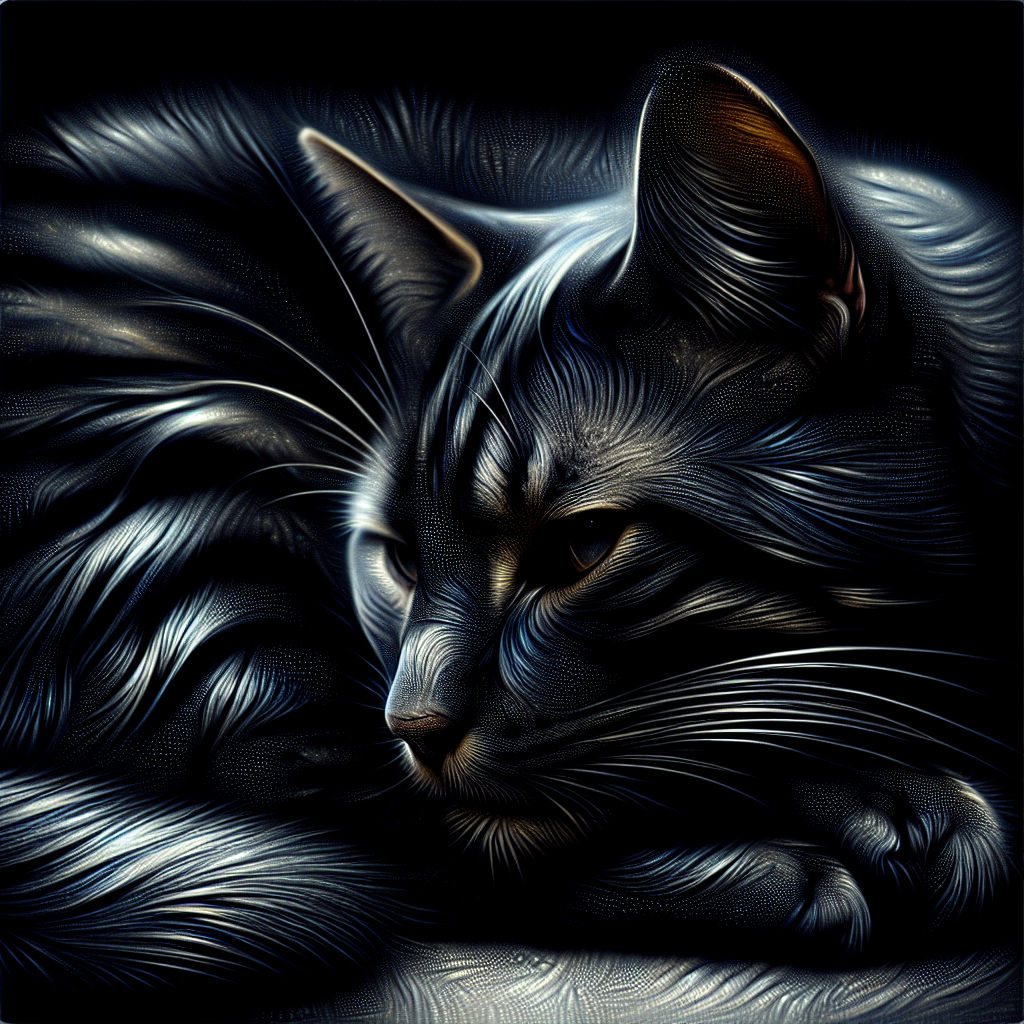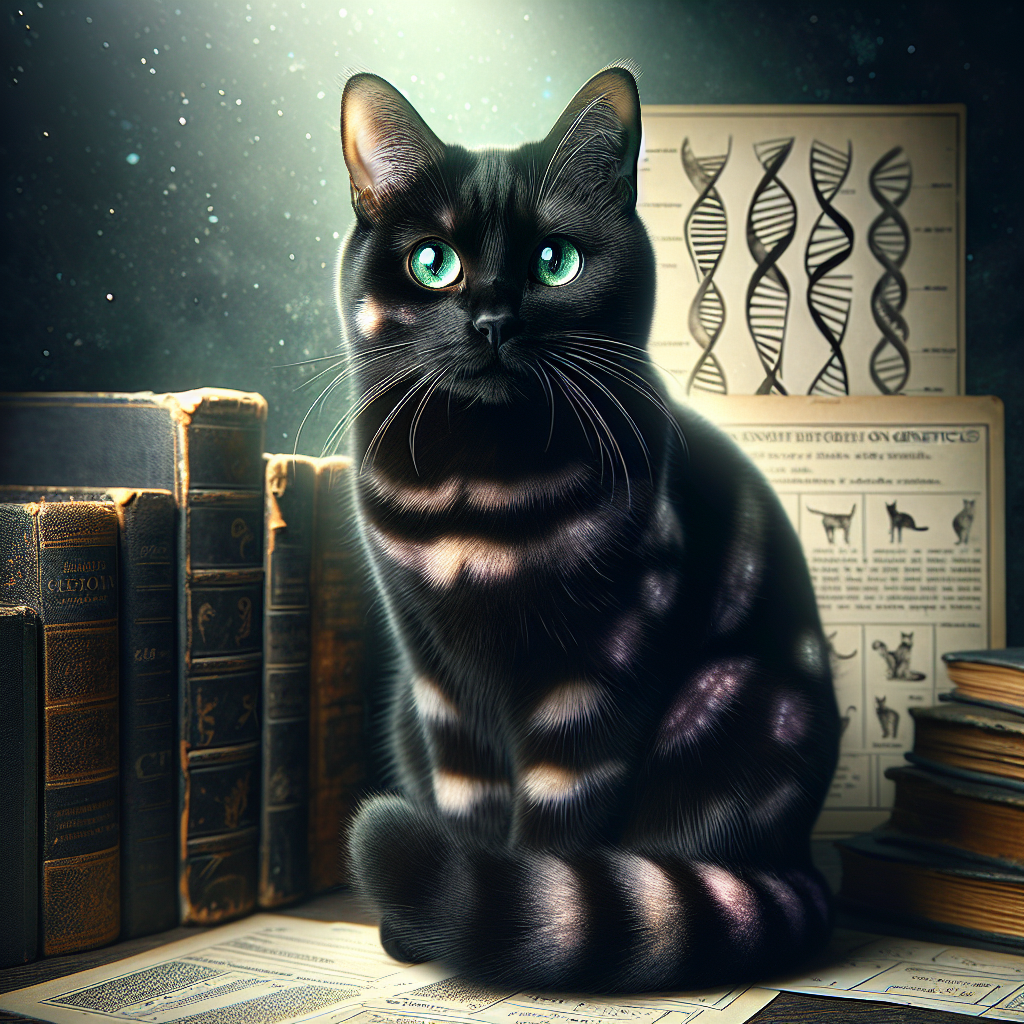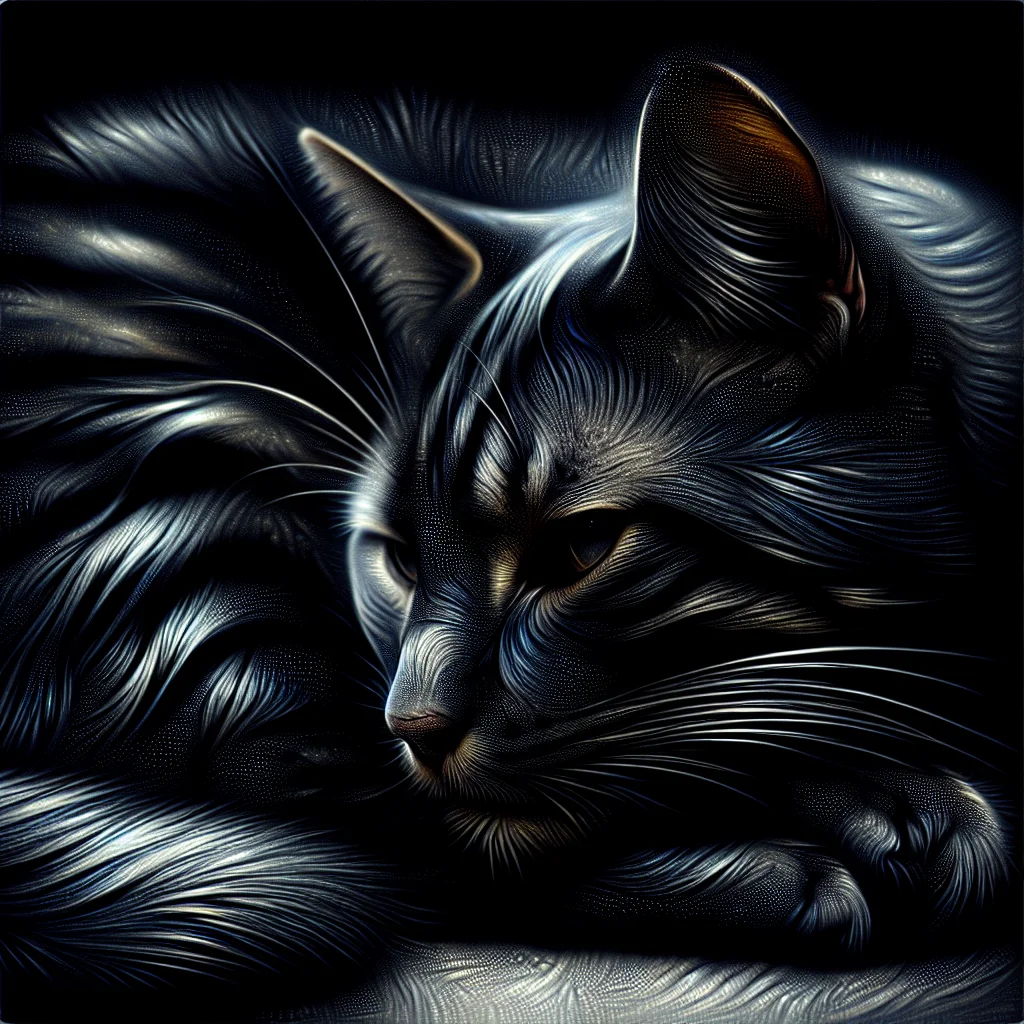Have you ever wondered if there is such a thing as a black tabby cat? Well, you’re in for a treat because we’re about to uncover the fascinating world of feline genetics. While black cats and tabbies are quite common, the combination of these two coat patterns seems somewhat elusive. In this article, we’ll explore whether black tabby cats truly exist and unravel the mystery behind these enchanting creatures. So, prepare to be captivated by the wonders of nature as we embark on this journey to uncover the truth behind the existence of black tabby cats.

What is a Tabby Cat?
Description of a tabby cat
A tabby cat is a domestic cat with a distinct coat pattern referred to as “tabby.” This pattern is characterized by dark markings on a lighter background. While tabby cats are often associated with their striped coat pattern, they can also display a variety of other markings, including spots, swirls, or marbling. These markings occur on the cat’s body, face, and tail, creating a unique and visually appealing appearance.
Characteristics of a tabby cat
Tabby cats not only have distinguishable coat patterns but also possess certain characteristics that set them apart. They are known for their playful and active nature, often displaying high levels of energy. Tabby cats are also generally intelligent and adaptable, making them excellent companions for both individuals and families. Furthermore, tabby cats come in a wide range of colors, including brown, gray, orange, and even silver.
Common coat patterns
Tabby cats can exhibit a variety of coat patterns, each with its own unique charm. Some of the most common tabby coat patterns include:
-
Classic Tabby (also known as blotched or marbled): This pattern features bold, swirling markings on the cat’s body, with a distinct “bullseye” or “butterfly” pattern on their sides.
-
Mackerel Tabby: The mackerel tabby displays narrow, vertical stripes on its body, similar to the pattern seen on a fish skeleton. This pattern is often observed on a tabby cat’s legs and tail as well.
-
Spotted Tabby: As the name suggests, this pattern consists of small, round spots across the cat’s body, resembling a leopard or cheetah.
-
Ticked Tabby: Ticked tabbies have fur with a salt and pepper appearance due to each individual hair having bands of different colors. This pattern is commonly found in Abyssinian cats.
By understanding these common coat patterns, you can appreciate the diversity and beauty of tabby cats.
Black Cats: A Myth or Reality?
The superstitions surrounding black cats
Black cats have long been associated with superstitions and folklore. In many cultures, these cats were believed to bring either good luck or bad luck, depending on the prevailing belief. Unfortunately, the negative superstitions surrounding black cats have led to their unfair stigmatization. Some people still associate black cats with witchcraft or bad omens, though these beliefs are purely mythical and lack any basis in reality.
Differentiating between solid black and black tabby cats
While black cats may appear similar at first glance, it is essential to differentiate between solid black cats and black tabby cats. Solid black cats have a uniform black coat without any distinguishable patterns or markings. On the other hand, black tabby cats also have a black coat, but their fur displays subtle tabby patterns that are visible under certain lighting conditions. These patterns may include faint stripes or spots, making black tabby cats uniquely beautiful and intriguing.
Understanding Coat Patterns
Genetics of coat color in cats
To understand coat patterns in tabby cats, it is necessary to delve into the genetics of coat color. Coat color in cats is influenced by various genes that dictate the production of pigments, such as eumelanin (black pigment) and phaeomelanin (red/yellow pigment). These pigments, combined with specific genes that control their distribution and expression, result in the multitude of coat colors and patterns observed in cats.
Types of tabby coat patterns
Tabby coat patterns are determined by specific genes that dictate the distribution of pigments in the fur. The four most common types of tabby coat patterns have been mentioned earlier – classic, mackerel, spotted, and ticked. Each pattern is the result of variations in gene expression, which cause specific markings to appear on a cat’s coat.
Determining if a cat is a tabby or not
Determining whether a cat is a tabby or not generally depends on its coat pattern. As mentioned earlier, tabby cats exhibit distinct patterns such as stripes, spots, or marbling. They may also have a prominent “M” shape on their forehead, further indicating their tabby status. However, some tabby patterns can be more subtle or masked by other coat patterns, making it important to closely observe the cat’s fur to identify any tabby markings.
Black Tabby Cat: Is it Possible?
Definition of a black tabby cat
A black tabby cat refers to a cat with a primarily black coat that also displays visible tabby markings. These tabby markings are typically seen as faint stripes or spots on the black fur, distinguishing them from solid black cats.
Is black tabby a recognized coat pattern?
While tabby coat patterns are widely recognized and accepted in various cat registries, the recognition of black tabby as a distinct coat pattern may vary. Some cat associations consider black tabby as a separate pattern, while others classify it within the broader category of tabby patterns.
Occurrence of black tabby cats
Black tabby cats do occur naturally, although they are relatively less common compared to solid black cats or other tabby patterns. The presence of black tabby cats can be attributed to genetic variations that result in the expression of both black and tabby coat traits. Breeders and cat enthusiasts often appreciate the unique appeal of black tabby cats, which has led to the establishment of specific breed standards for certain cat breeds.

Identification and Characteristics
Distinguishing a black tabby cat from other coat patterns
Distinguishing a black tabby cat from other coat patterns may require closer examination of its fur. While solid black cats lack any visible patterns, black tabby cats can exhibit subtle striped patterns, spots, or marbling on their black coats. Under certain lighting conditions or when observing the fur at close range, these tabby markings become more apparent, helping to differentiate black tabbies from their solid black counterparts.
Typical characteristics of black tabby cats
Black tabby cats share many characteristics with other tabby cats, such as their playful and active nature. However, black tabby cats often exhibit an air of mystery and elegance due to their striking black coats and subtle tabby markings. Their unique appearance makes them a visually captivating companion that stands out among other cats.
Breeds with Black Tabby Cats
Common breeds with black tabby cats
Several cat breeds are known to produce black tabby individuals. Some of the common cat breeds that may have black tabby cats include:
-
Maine Coon: This large and majestic breed is known for its tufted ears, tufted paws, and distinct tabby coat patterns, including black tabbies.
-
British Shorthair: The British Shorthair breed, renowned for its round face and plushy appearance, can also produce black tabby cats.
-
Bengal: The Bengal breed, known for its resemblance to wild leopard cats, can occasionally produce black tabby individuals with striking patterns.
Specific breed standards for black tabby cats
In certain cat breeds, black tabby coat patterns are recognized and valued according to specific breed standards. These breed standards outline the desired physical attributes, including coat patterns, that conform to the breed’s ideal appearance. Breeders and enthusiasts follow these standards to maintain the integrity and distinctiveness of each breed, including the recognition of black tabby cats.
Black Tabby Cat Genetics
Inheritance of coat color genes
The inheritance of coat color genes in cats is a complex process involving multiple genes. Black coat color is primarily determined by the presence of the dominant gene “B,” while the absence of this gene results in other coat colors, such as brown or red. The expression of tabby coat patterns, including black tabby, is influenced by additional genes that modify the distribution and appearance of pigments on the fur.
Genetic variations leading to black tabby coat pattern
The black tabby coat pattern occurs due to specific genetic variations that combine black coat color genes with the genes responsible for tabby markings. These variations can alter the way pigments distribute along the hair shaft, resulting in the appearance of stripes or spots on an otherwise black coat. While the genetic mechanisms behind black tabby coat patterns are still being studied, it is clear that these variations contribute to the unique and captivating appearance of black tabby cats.
Misconceptions and Confusion
Misidentified black tabby cats
Due to the subtle nature of tabby markings on black coats, black tabby cats can sometimes be misidentified or mistaken for solid black cats. Without close observation and proper lighting, it can be easy to overlook the tabby patterns on a black tabby cat’s fur. This misidentification can lead to confusion and a lack of recognition for the unique beauty of black tabby cats.
Similar coat patterns often mistaken for black tabby
Some coat patterns, such as agouti and smoke, can bear a resemblance to black tabby cats, leading to potential confusion. Agouti cats have banded hairs that give them a salt and pepper appearance, while smoke cats have an undercoat of lighter color that contrasts with the black topcoat. Though these coat patterns might resemble black tabbies from a distance, a closer examination reveals the distinct tabby markings unique to black tabby cats.
Famous Black Tabby Cats
Notable black tabby cats in history
Throughout history, numerous black tabby cats have gained fame and adoration. One famous black tabby was Churchill, the beloved cat of British statesman Sir Winston Churchill. Churchill’s black tabby cat was often photographed alongside him, becoming an iconic figure during the leader’s tenure.
Black tabby cats in popular culture
Black tabby cats have made appearances in various forms of popular culture. In literature, the character Crookshanks from the Harry Potter series is depicted as a black tabby. Additionally, black tabbies have been featured in films, TV shows, and even cartoons, further cementing their place in popular culture.
Conclusion
In conclusion, black tabby cats do exist, representing a fascinating combination of a primarily black coat with tabby markings. While they may be overlooked or misidentified due to their subtle patterns, understanding the genetics and unique characteristics of black tabby cats helps appreciate their beauty. Whether you encounter a black tabby cat in person or encounter them in history or popular culture, their striking appearance and captivating nature make them a wonderful addition to the diverse world of feline companionship.

